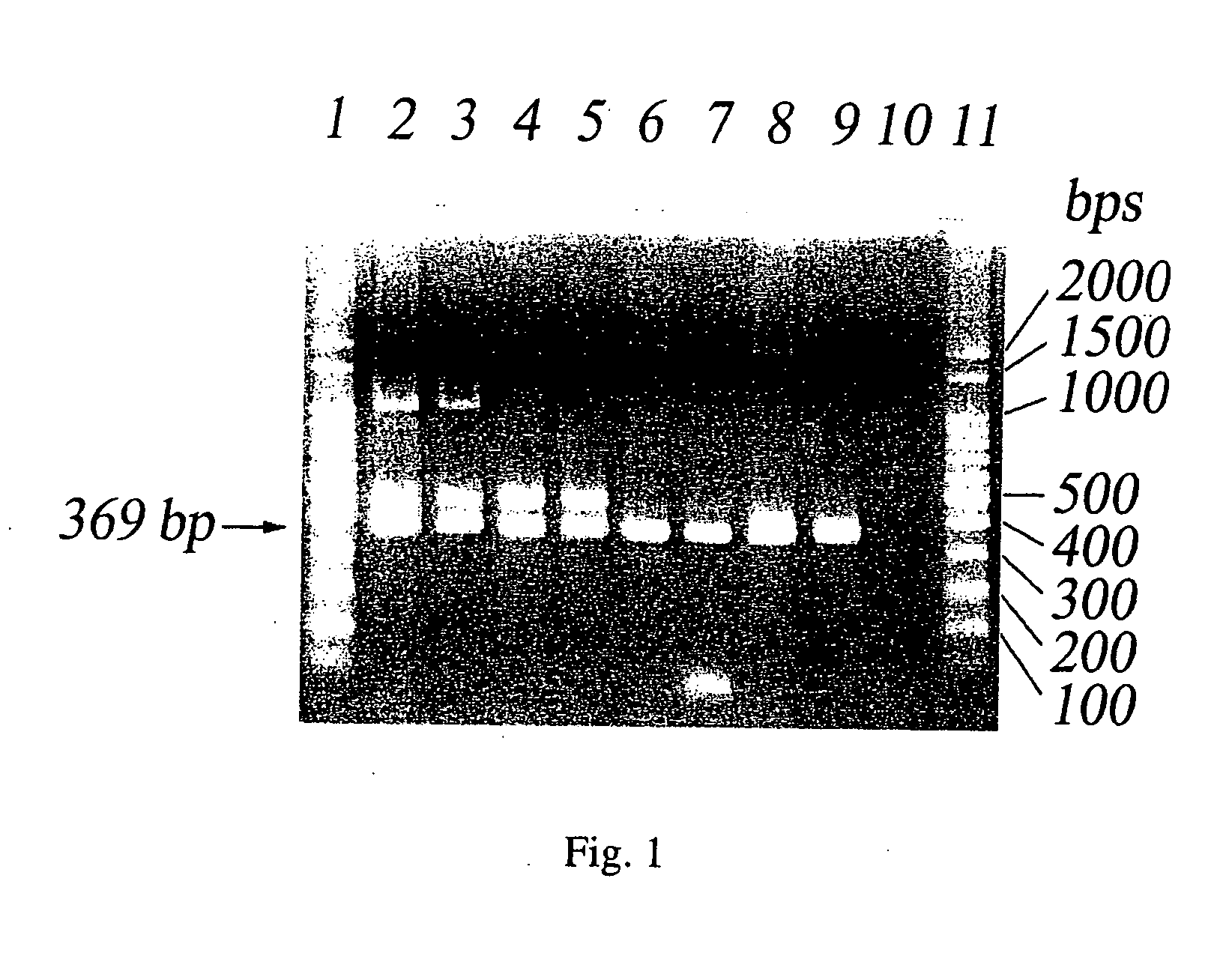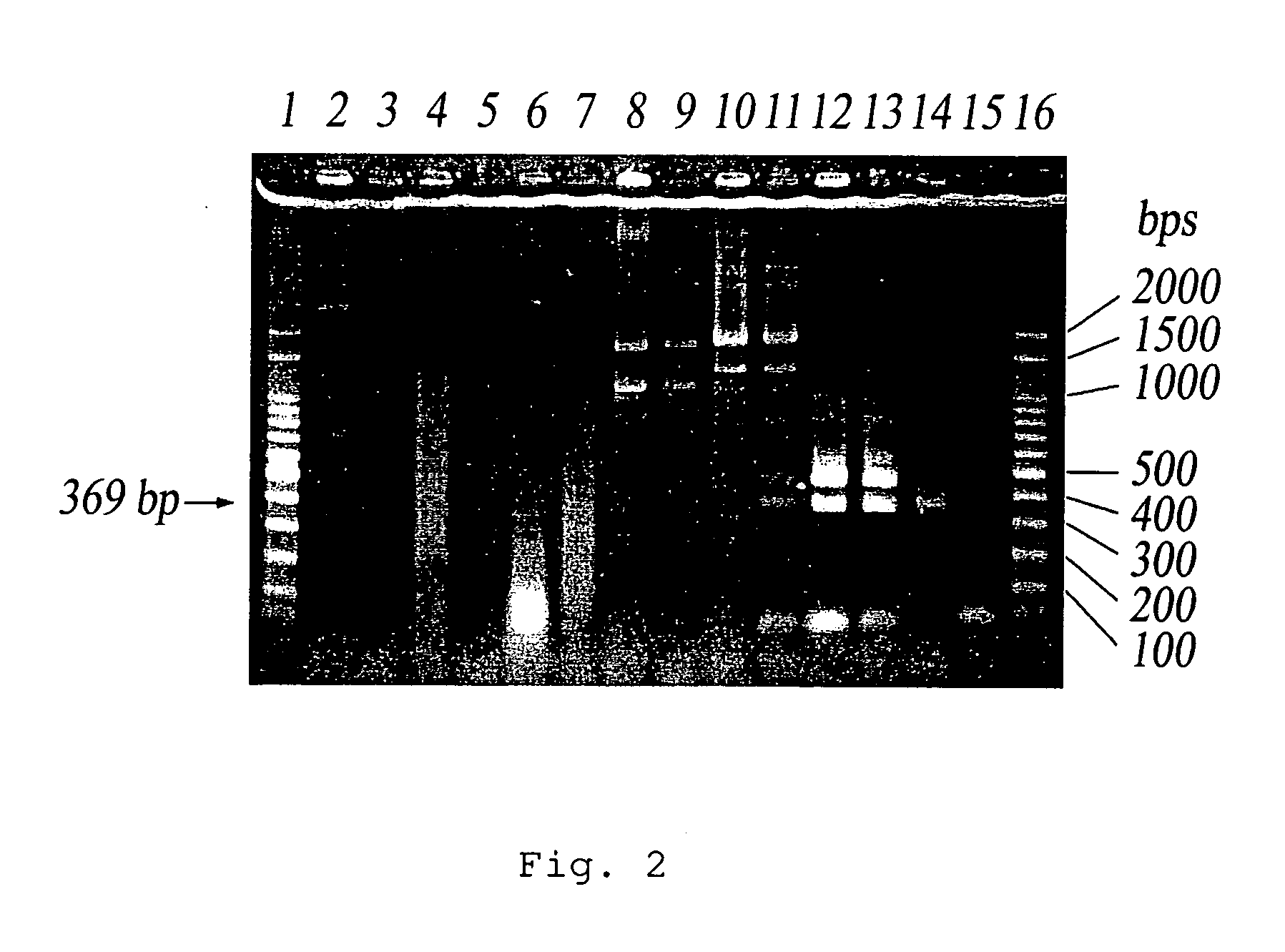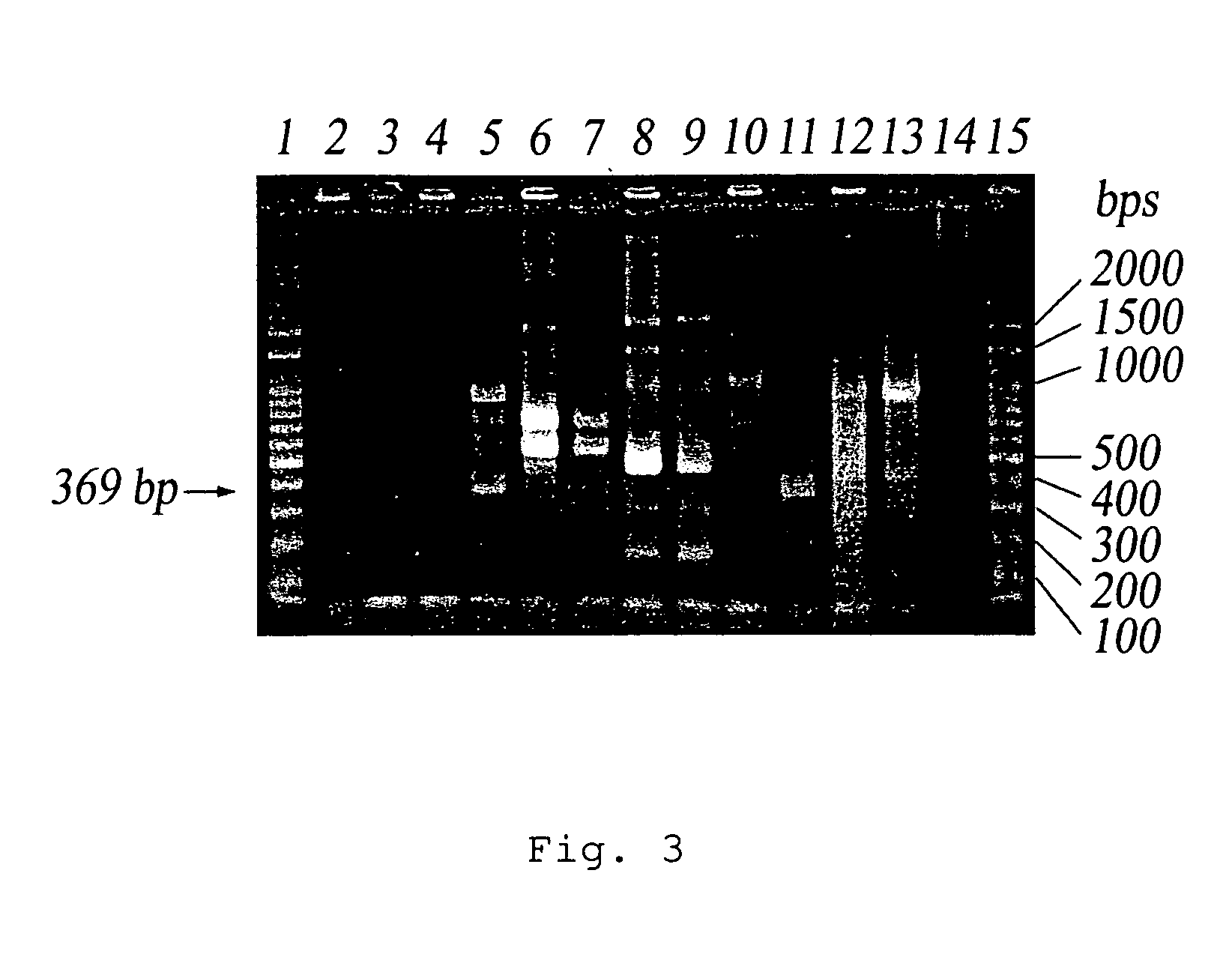Primer composition and method of using the same in the detection of Shigella sonnei
a technology of primer composition and shigella, which is applied in the field of new, can solve the problems of not being able to specifically detect the existence of shigella sonnei, complicated and time-consuming, and frequent infection of sonnei /i>
- Summary
- Abstract
- Description
- Claims
- Application Information
AI Technical Summary
Problems solved by technology
Method used
Image
Examples
example 1
[0058]S. boydii (ATCC 8700), S. dysenteriae (ATCC 4837), S. flexneri (ATCC 29903) and S. sonnei (ATCC 29930) were incubated in LB broth at 37° C. overnight. The resulting solution was diluted by 102 and 103 times with sterile water. 1 ml of the diluted solution was added to 50 ml water and then filtered by fluropore membrane. A PCR reaction was performed using IS1SS and IS1SR3 as primers and the resulting membrane as template. The PCR products were analyzed by gel electrophoresis. The resulting gel was dyed by ethidium bromide and observed under UV light. A control was prepared by adding 1 ml of sterile water to 50 ml water and conducted the PCR reaction as described above. As shown in FIG. 1, the samples of the S. boydii, S. dysenteriae, S. flexneri and S. sonnei diluted by 102 and 103 times have a band of 369 base pair DNA fragment in the gel (lanes 2-9) and the control does not have the band (lane 10).
example 2
[0059]Escherichia W3110 (ATCC 27325), Sallmonella choleraesuis (ATCC 13311), Klebsiella pneumoniae (ATCC 13883) were incubated in LB broth at 37° C. overnight. Serratia marcescens (ATCC 13880) was incubated in LB broth at 25° C. overnight and Enterobacter aerogenes (ATCC 13048) and Enterobacter cloacae (ATCC 13047) were incubated in LB broth at 30° C. overnight. The resulting solutions were diluted by 102 and 103 times. 1 ml of the diluted solution was added to 50 ml water and then filtered by fluropore membrane. A PCR reaction was performed using IS1SS and IS1SR3 as primers and the resulting membrane as template. The PCR products were analyzed by gel electrophoresis. The resulting gel was dyed by ethidium bromide and observed under UV light. A control was prepared by adding 1 ml of sterile water to 50 ml water and conducted the PCR reaction as described above. As shown in FIG. 2, the sample of the E. aerogenes diluted by 103 times or the sample of E. coli W3110 diluted by 102 and 1...
example 3
[0060] The ground water sample and well water sample were incubated in LB broth at 20° C. or 25° C. 16 strains were isolated from the samples and then identified. One strain cannot be identified and two strains were dead during the identification. Six strains, P. syclowiorum, S. odorifera, P. agglomerans, E. hermanii, A. calcoacet / baumannii / gen 2 and S. marcescens, were identified from the well water incubated at 25° C. Two strains, A. johnsonii and S. capitis, were identified from the well water incubated at 20° C. Five strains, O. ureolytica / urethralis, X. maltophilia, A. delafieldii, X. maltophilia and A. genospecies 15, were identified from the ground water incubated at 25° C. The 16 strains were incubated in LB broth overnight. The resulting solutions were diluted with sterile water. The resulting solutions were diluted by 102 and 103 times. 1 ml of the diluted solution was added to 50 ml water and then filtered by fluropore membrane. A PCR reaction was performed using IS1SS an...
PUM
| Property | Measurement | Unit |
|---|---|---|
| temperature | aaaaa | aaaaa |
| pore size | aaaaa | aaaaa |
| temperature | aaaaa | aaaaa |
Abstract
Description
Claims
Application Information
 Login to View More
Login to View More - R&D
- Intellectual Property
- Life Sciences
- Materials
- Tech Scout
- Unparalleled Data Quality
- Higher Quality Content
- 60% Fewer Hallucinations
Browse by: Latest US Patents, China's latest patents, Technical Efficacy Thesaurus, Application Domain, Technology Topic, Popular Technical Reports.
© 2025 PatSnap. All rights reserved.Legal|Privacy policy|Modern Slavery Act Transparency Statement|Sitemap|About US| Contact US: help@patsnap.com



